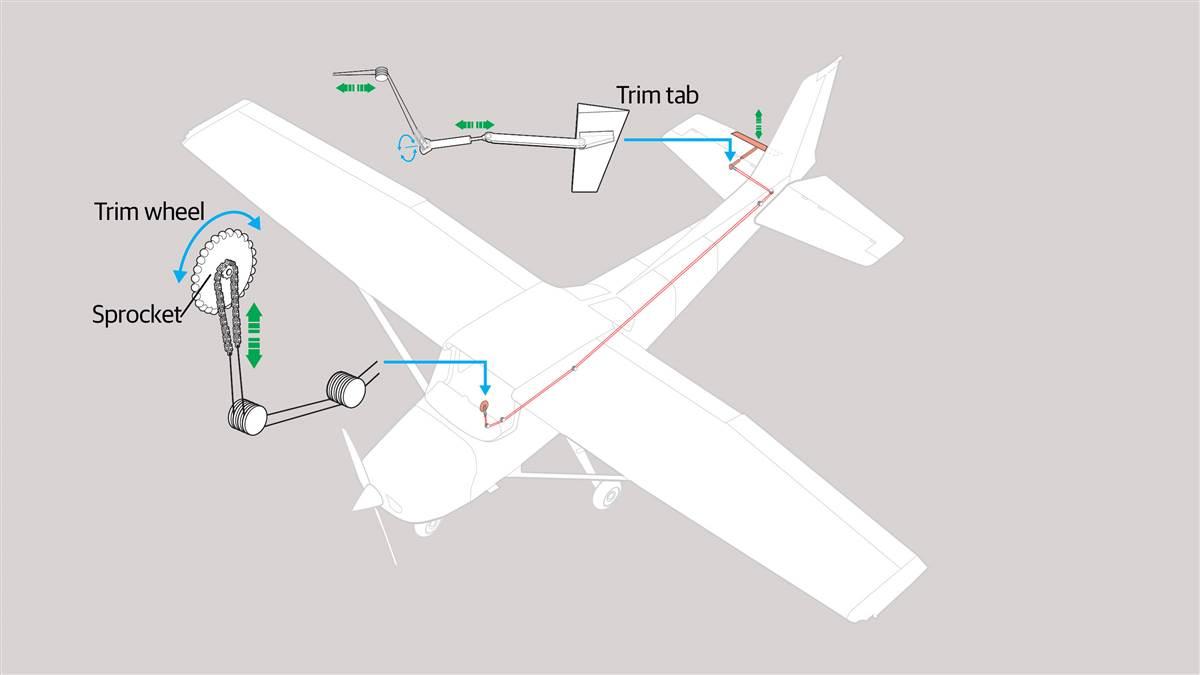How it works: Tweaking pitch
Taking the load off

Sure, the function of the control yoke/stick and rudders are easy to comprehend. But the pitch trim wheel is a big part of the control system mix. It comes into play every time an airplane changes configuration—such as extending or retracting flaps, turning, climbing, descending, or holding a selected airspeed. And every time power is increased or decreased.
Whenever those changes occur, the airflow—and air load—over the horizontal stabilizer and elevator also changes. Increase power, and the nose will rise. Decrease power, and the nose drops. If you’re trying to hold altitude, you could find yourself pushing or pulling on the control yoke with extra effort. You need a little help to eliminate these extra forces and reduce your workload. That’s where the pitch trim wheel comes in.
The trim wheel moves the trim tab at the aft edge of the elevator, which in turn adjusts the position of the entire elevator. Move the trim wheel just the right amount, and the trim tab moves the elevator to compensate for the effects of any change in lift produced by the tail surfaces. In flight, you’ll find the trim wheel very handy in positioning the tab so that you can fly hands-off—whether you’re climbing, descending, or straight and level.
How does the pitch trim system work? The trim wheel in the cockpit is attached to a sprocket, and a chain rides in the sprocket’s teeth. The chain is swaged (crimped tightly) to a long, woven stainless steel cable that runs through pulleys and guides under the panel and the cabin floor. This cable run goes all the way back to the tailcone, where it makes a couple right-angle turns through two more pulleys. Finally, it’s swaged to another chain. This chain also rides in a sprocket. When the sprocket turns, it moves the trim tab actuator, which moves the trim tab up or down. You can see the actuator’s connection to the trim tab—and should inspect it for integrity during every preflight inspection.
Having done its job moving the trim tab actuator, where does the chain go from there? It’s attached to another cable, which runs through pulleys and guides back to the trim wheel in the cockpit. The system is a closed loop with chains at either end.
Electrically powered trim control systems are more complicated and use switches and servos to move the cable and sprockets. Instead of manually moving a trim wheel, you’ll press a sliding switch on the control yoke to trim the nose up or down.
A big problem can occur with electrically controlled trim systems: The trim motors may “run away,” sending the airplane into uncommanded pitch movements. To stop that, pull the trim motor’s circuit breaker. Now you’re back to manually trimming with the trim wheel, just like you learned when you started flying.

